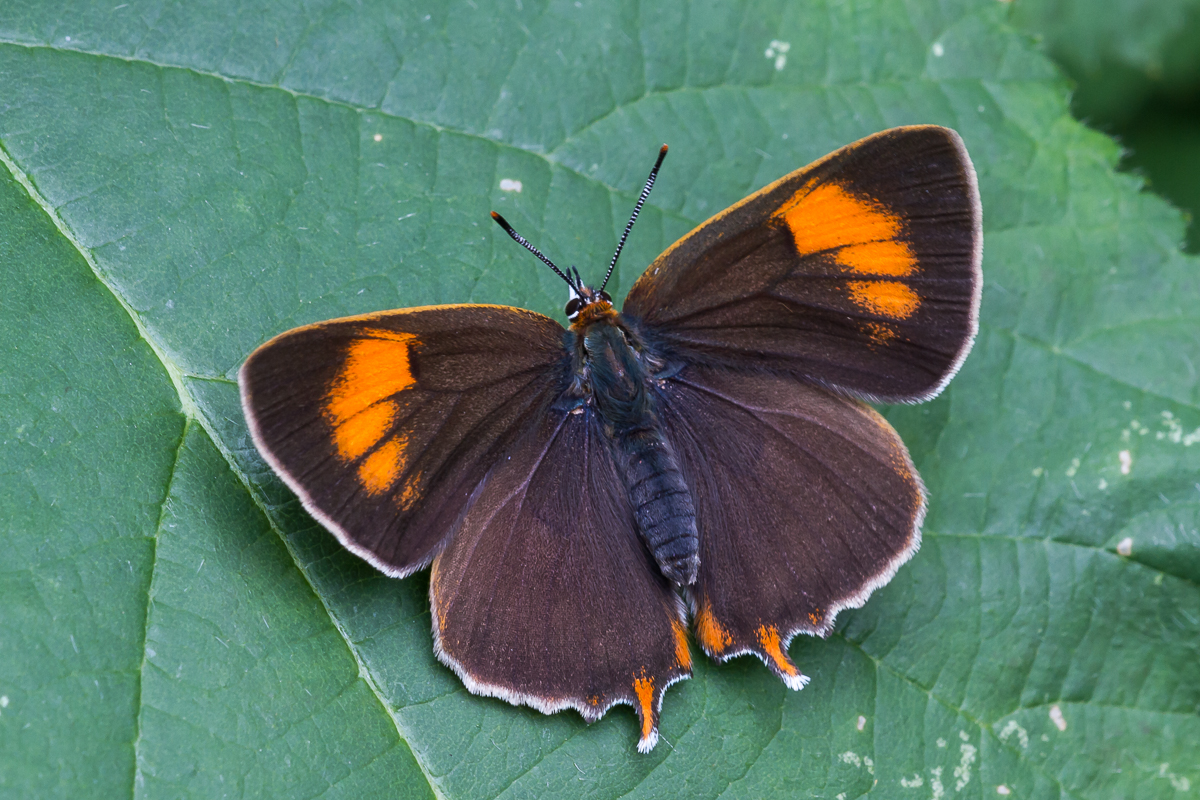
Photo © Peter Eeles
This is the largest hairstreak found in the British Isles. It is a local species that lives in self-contained colonies that breed in the same area year after year. This species can also prove elusive, since it spends much of its time resting and basking high up in tall shrubs and trees. The female is particularly beautiful, with forewings that contain large orange patches, and was once considered to be a separate species known as the "Golden Hairstreak". This species is found in the southern half of England and Wales, and also around the Burren in Ireland. In England its strongholds are in West Sussex, Surrey, Oxfordshire, Buckinghamshire, North Devon and South Devon. Strongholds in Wales are in Cardiganshire and Carmarthenshire. In Ireland it is primarily found in the Burren limestones of Clare and South-east Galway. The northernmost sites are found in North Lincolnshire.
Adults emerge in the morning and males generally appear a few days before females. This is a warmth-loving butterfly, and is rarely seen on overcast days. On sunny days the adults will rest with wings open, absorbing the sun's rays on their dark brown wings which gradually close as they warm up. In flight, the adults are easily mistaken for the Gatekeeper, which flies at the same time.
The males are the more-elusive of the two sexes, congregating high on ash "master trees" that are positioned around the breeding area, where they feed on honeydew. They occasionally come down to feed on various nectar sources, such as Hemp Agrimony, probably when honeydew is scarce. When they do come down, however, they can be remarkably tame and easy to observe. Mating occurs without any discernable courtship, typically high in a tree.
Females also spend their time on the master trees until the eggs have matured and they are ready to lay. They then disperse and alternate between basking in the warm sunshine, feeding from nectar sources, and egg-laying. Egg-laying sites are typically in sheltered areas at the edges of woodland or hedgerows where younger growth that is south-facing is favoured. The female will crawl among the branches of the foodplant, feeling the branches for appropriate sites, when egg-laying.

This species lives in habitats where Blackthorn, the primary larval foodplant, is abundant, such as hedgerows and woodland.
Adults feed primarily on Honeydew (N/A). brambles (Rubus spp.), Common Fleabane (Pulicaria dysenterica), Devil's-bit Scabious (Succisa pratensis), Hemp-agrimony (Eupatorium cannabinum), ragworts (Jacobaea spp.), thistles (Carduus spp. and Cirsium spp.) and umbellifers (Apiaceae spp.) are also used.
The primary larval foodplant is Blackthorn (Prunus spinosa). cherries (Prunus spp.) is also used.
